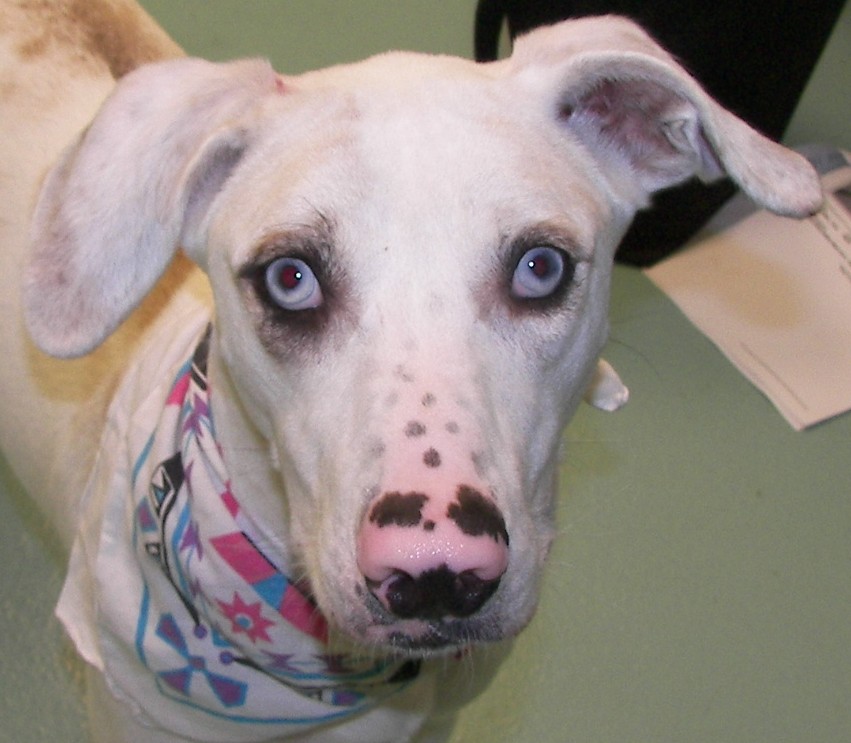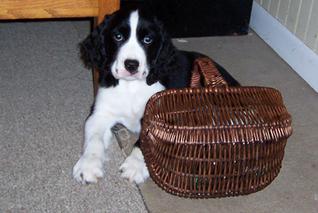House training a new dog or puppy can seem intense. But if you put in the time at the beginning, right from the start, the rest of your dog’s life will be smooth sailing!
How to house-train your dog:
- Reward him when he eliminates outside – you can even specify the spot!
- Make sure he never pees or poops inside.
- That’s it!

What you have to do:
This protocol works with puppies and adult dogs. It even works for dogs who already have a bad habit of eliminating indoors. It may take longer for a dog with a habit of peeing or pooping indoors, but stick to the plan. You have to develop new habits of preventing your dog from eliminating indoors. I know you can do it!
PREVENTION: Keep your dog on a leash when you’re with him indoors. Anytime you can’t have him with you on a leash, put him in his confinement area. (The confinement area may be a dog crate or kennel, or a laundry room or bathroom where your dog is comfortable. It must be small enough to minimize opportunities to get into things. Dogs should relax and maybe chew a safe chew toy in their confinement areas, so not much space is required.)
REWARDING THE BEHAVIOR YOU WANT: The leash will keep your mind on the dog, reminding you that he is not potty trained and you are the teacher. You want him to learn to pee and poop only outside on the grass. Take your dog outside on a leash every time he goes out to eliminate. Don’t let him run and play until he potties. “We’re out here to go to the bathroom right now – playtime, sniff time, etc. comes later,” you’ll tell him. Reward him with a treat when he goes. Take off the leash so he can play in the yard if he likes that. Let him go back inside if that’s what he wants.

How to give treats to reward/reinforce good potty behavior:
Don’t interrupt when the dog is peeing or pooping, but make sure you’re right there beside him. You don’t want to miss the opportunity to let him know he did the right thing! The leash will help with that.
As soon as you see him lifting his body from the potty position, pop the best-tasting treat you have in his mouth. He’ll easily connect that reward with the behavior he just completed.
This is so important! Your dog can only potty a few times each day, and you want him to get the highest number of rewards for peeing and pooping in the grass. There’s really no substitute for positive reinforcement. When your dog resisted the urge to go immediately and waited for you to get him to the right place, he earned that treat! So don’t miss those opportunities. That’s how your dog will learn quickly and completely.
The dog does not have to come to you to get the treat. He pees – he gets the treat. He poops – he gets the treat. Then, if you want to, you can let him off the leash to play for a bit. If he happens to pee again during this time, make that extra effort to get over there and give him a treat for doing so!
Put your new dog on a potty schedule
A schedule is the best way to help you learn when when your dog needs to potty. On your very first day with your new best friend, take him out every hour on the hour, just for a potty break. Give him a treat if he goes, and go back in if he doesn’t. You’ll learn when he’s likely to need to go.
Dogs have their habits. How long after a meal will it be before he needs to potty? How long after a nap? It’s always a good idea to get him out to the grass last thing before bed and first thing when he wakes up. The other times will be what you need to learn. You may start seeing him glance at the door, or sniff around in a particular way when he needs to potty. Notice, and take him out. Better to go out more times than necessary than to not go out and have him pee on the floor!
Written notes are a good idea! Keep a record on the front of the refrigerator for the whole family to make notes on. Note the time and whether the dog peed or pooped in the grass.
What if I take my dog out and he won’t potty?
If you take him out and he just won’t go, you can return inside but you need to keep him extra close, since you know he needs to go. Wait 5 minutes and take him back out. Still nothing? Go back in and wait another 5 minutes. Don’t give up! This is a time when you really have to stick with the protocol, because you know he is close to needing to relieve himself. You’re close to that opportunity to have him in the grass when he does, and give him that treat that lets him know this is a good thing! This is an important learning moment.
Help your dog develop the habits you want him to have. If he never eliminates in the house, he won’t develop that habit. Even if he has an accident or two indoors, you can still teach him to really want to go to some trouble to get out there when he feels the urge. (I’m sorry to say that the “accidents” are really our accidents, as dog owners. They are the times we let our attention get distracted. Make sure your dog is with you, on a leash, or confined at all times. Remember: your dog probably doesn’t care where he pees or poops and you’re the teacher.)

Your dog will learn to let you know when he needs to go!
Build your dog’s motivation to get outside by teaching your dog how GREAT it is when he pees or poops in the grass. You will mostly go out the same door to take him to the grass, so it will be easy for him to let you know he needs to go! That’s the beauty of routine. When you do it the same way every time, your dog will learn quickly and start taking over the responsibility.
That’s when you can start teaching your dog to ring a bell or do some other behavior to let you know when he needs to go out. After all, you won’t have him on a leash with you forever. There are many options: teach him to come and get you, to ring a bell, or even to use a doggie door. But don’t leave it to him to figure out the doggie door before he understands to go to the grass to potty.
Start with a very tight routine, and loosen it up as your dog learns.
When you first get a dog or puppy, there are many reasons to use a leash and a confinement area to keep his boundaries close. As your new best friend starts showing you when he needs to go outside to potty, you can take the leash off more and more. Remember, the leash is a good reminder for you as well as a good way to keep your dog close while you learn what it looks like when he needs to potty.
I hope you have a great life with your new dog and he only potties outside on the grass! (If you want him to use a potty pad, you can train it in the same way.)

